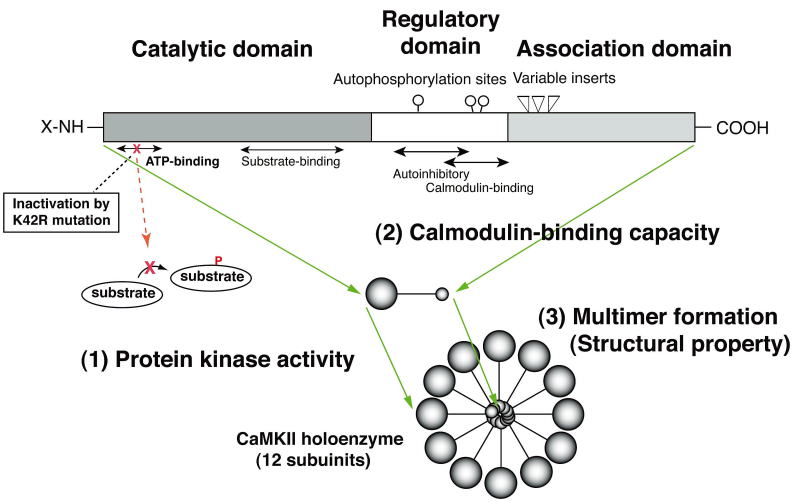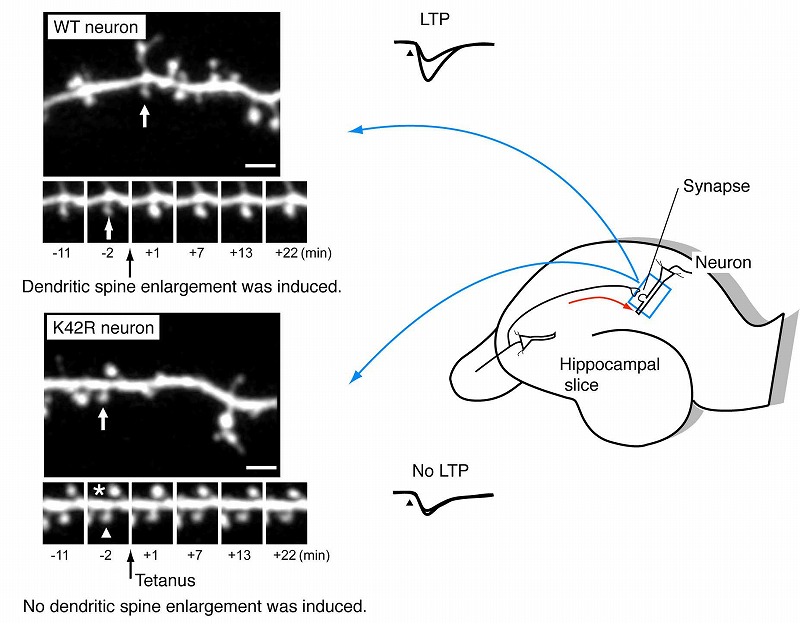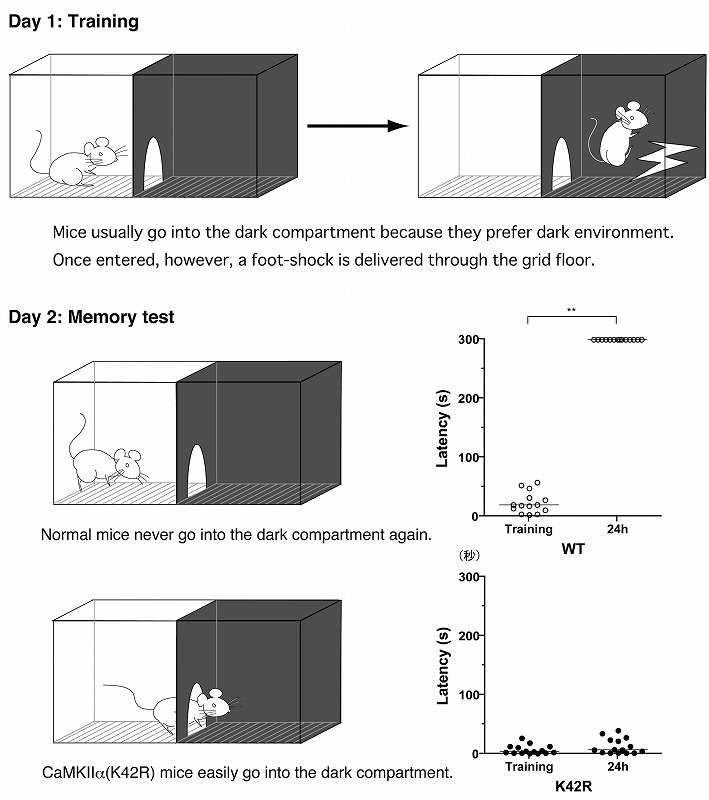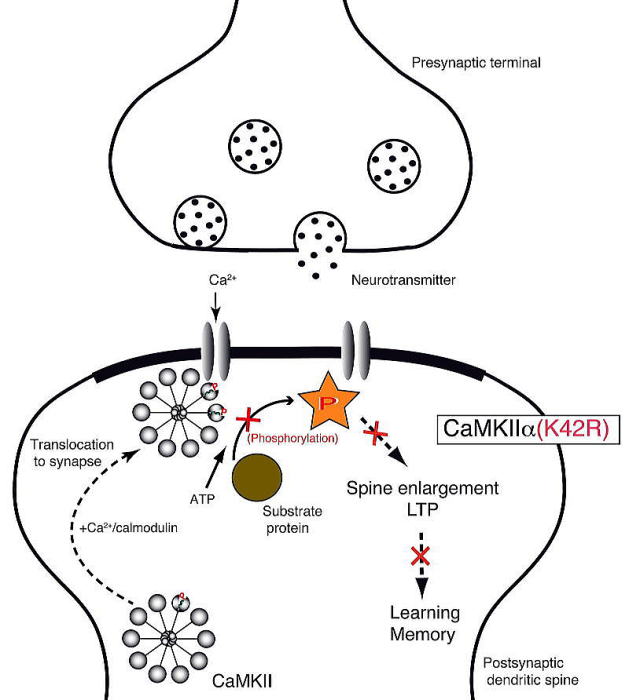
Ca2+/calmodulin-dependent protein kinase IIα (CaMKIIα) is an enzyme that adds
phosphates to a variety of protein substrates to modify their functions.
CaMKIIα is especially enriched in the hippocampus, and is believed to be
an essential mediator of activity-dependent synaptic plasticity and memory
functions. However, the causative role of the enzymatic activity of CaMKIIα
in such processes has not been demonstrated yet, because this enzyme has
multiple protein functions other than the kinase activity.
We recently generated a novel kinase-dead knock-in mouse of the CaMKIIα
gene that completely and exclusively lacks its kinase activity by introducing
a point mutation (K42R) that prevents ATP binding necessary for phosphorylation
reaction. We examined hippocampal synaptic plasticity and behavioral learning
of the mutant mouse. In the homozygous CaMKIIα (K42R) brain, tetanus-induced
long-term potentiation (LTP) and sustained dendritic spine enlargement,
a structural basis for LTP, were both impaired, whereas activity-dependent
postsynaptic translocation of CaMKIIα was preserved. In addition, the CaMKIIα
(K42R) mouse showed a severe deficit in inhibitory avoidance learning,
a form of memory that is dependent on the hippocampus. We concluded that
the kinase activity of CaMKIIα is essential for structural, functional
and behavioral expression of synaptic memory.
Reference:
Yamagata Y, et al, Journal of Neuroscience, 29: 7607-7618, 2009.
Press release:
http://www.nips.ac.jp/eng/contents/release/entry/2009/06/post-7.html

Figure 1. Generation of kinase-dead Ca2+/calmodulin-dependent protein kinase IIα (CaMKIIα) (K42R) knock-in mouse
that lacks kinase activity but preserves other protein functions. (Large figure)

Figure 2. In the homozygous CaMKIIα (K42R) knock-in mouse, tetanus-induced
LTP and sustained dendritic spine enlargement were both impaired.(Large figure)

Figure 3. Homozygous CaMKIIα (K42R) mice showed a severe impairment in
inhibitory avoidance learning, a form of memory that is dependent on the
hippocampus.(Large figure)

Figure 4. Kinase activity of CaMKIIα is essential for dendritic spine enlargement,
LTP and learning. (Large figure)
updated 23-Feb-2010